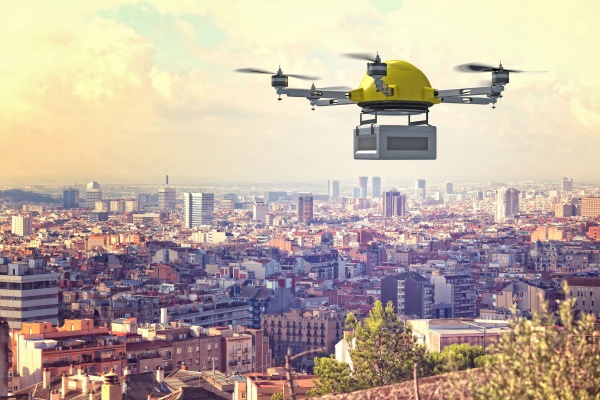As we dived deep into procurement for the Procurement As-a-Service 2016 Blueprint, we had a lot of almost philosophical conversations about the future of procurement.
About the fun stuff, not the procurement grunt work like invoice processing, PO matching, accounts payable. No, about cognitive procurement, predictive analytics, procurement being completely automated and invisible.
Amara’s Law concluded about the future and our estimations thereof: We tend to overestimate the effect of a technology in the short run and underestimate the effect in the long run.
Bill Gates famously paraphrased: “We always overestimate the change that will occur in the next two years and underestimate the change that will occur in the next ten.”
So, here are our overestimations and underestimations for procurement in two and ten years’ time:
Overestimations … within two years:
* Service providers successfully scale the knowledge of their scarce category experts with brilliant cognitive solutions.
* P2P platforms completely automate away manual transactional procurement.
* Suppliers are completely digitized on what we used to call Supplier Networks or Business Networks and now know as collaboration platforms.
* Service providers have adopted on-demand As-a-Service to the extreme – they don’t talk about multi-year contracts or total contract value anymore – just about number of subscribers, active users, churn, annual and monthly recurring revenue (ARR / MRR) growth.
* Amazon takes over the B2B Marketplace (if in Asia – Alibaba). Amazon Business is the de facto marketplace in B2B.
* If you’re looking for the Procurement department, follow the signs: Brokers of Capability.
* Competition from outside outsourcing or procurement disrupts outsourcing of specific categories – like DHL in logistics.
* With Blockchain cemented into the core processes, we also pay in Bitcoin.
Underestimations, or what we’ll see (!) in 10 years:
* Algorithms will decide the preferred supplier du jour.
* Algorithms will determine what, how, where and when to buy, show you options and recommendations.
* No one touches an invoice or a purchase order. Blockchain and smart contracts take care of transactions.
* Some categories disappear (probably office supplies – as we go paperless, you can bring your own pen or pencil (BYOP).
* Connected assets (IoT) in value chains will tell algorithms what to buy and when.
* No need for approvals, the algorithm got it.
* Predictive analytics decide what you need – the system knows our needs better than we do.
* When I want to buy something algorithms, and analytics didn’t figure out already, I just tell Alexa to get it for me.
* Stuff will unexpectedly appear on your desk or doorstep.
* Fedex and UPS will help return stuff you, after all, didn’t need….by a drone or an Uber.

Bottom Line: The future is already here – it’s just not evenly distributed yet
To end with the famous quote from William Gibson. All the forces impacting procurement and driving our overestimations and underestimations are here today. Some very nascent and aspirational – cognitive procurement, IoT, Blockchain, true predictive analytics. Others have been embraced by the market and broadly implemented into procurement and Procurement As-a-Service offerings – procurement platforms, supplier networks, intelligent automation. Ask yourself; will you be on the overestimated or the underestimated side of this transformation? Figure out what the future looks like for your procurement function and start preparing now or risk becoming obsolete.
Posted in : Business Process Outsourcing (BPO), Cognitive Computing, Digital Transformation, Procurement and Supply Chain






@Derk
I have been thinking a lot recently about the differences between the disruptions that will be game-changing for the procurement delivery model, and where we stand today. Your piece sums this up perfectly. There are known’s (the potential of these technologies), and unknowns (the time frames in which they will be ready – and adopted by – mass market). It is hard to cut through the hype and the noise to see what is really happening – and if this time will be different.
What is clear though is that we in the procurement profession have to think differently in a way that take us above the traditional notion of what procurement is.
Generally speaking, 80% of what we do now will disappear eventually (in 5 years, 10 years, who knows?), so we have to change the game in the way we approach the 20% TODAY. In my mind, we need to prove that a centralized pool of supply market experts can deliver an ROI that outweighs other internal investment opportunities and do it quickly.
These are interesting, hazardous but also exciting times for procurement professionals!
Very interesting predictions. For my part it will be very interesting to see the extent to which there is a polarising effect between large businesses and SMEs. I can see many SMEs (and mid-sized organisations) maybe being able to go down the automated, Amazon Business route far more quickly than many of the large operations with the turning circle of a battleship. However, those large organisations with the will and ability to invest may well find the benefits come sooner.
There is a huge challenge for Procurement professionals to take the lead in being more strategic visionaries of where value is created – if you’re just buying stuff (and being motivated to just buy that stuff cheaply) then your job is really at risk, but if you understand the benefits generated by the stuff or service you’re buying and can work out how to leverage that in your business then high quality Procurement can be truly transformational. This also gives a gap which the outsourcers and advisors need to step into or they will die out, too.
Unfortunately, even in the strategic consultancy world, I don’t see too much of that visionary thinking being demonstrated at the moment and if the end users aren’t seeing that either then the bots will take over and a significant opportunity will be lost.